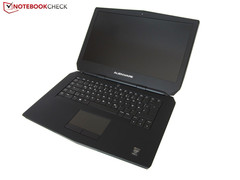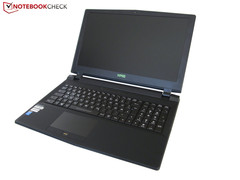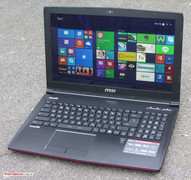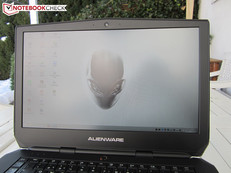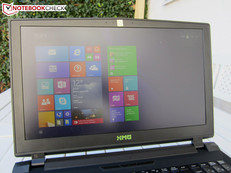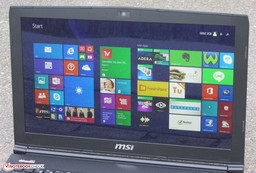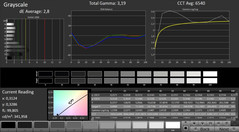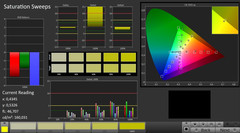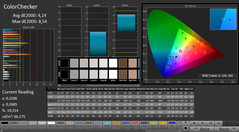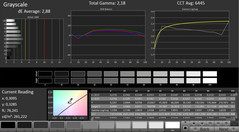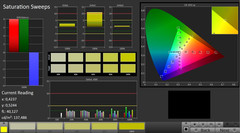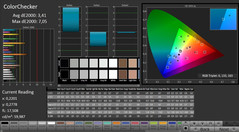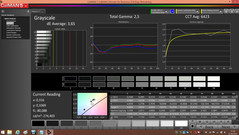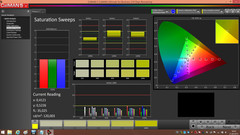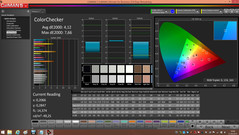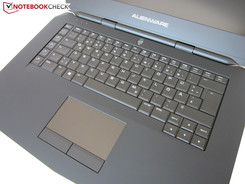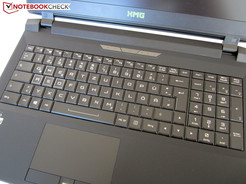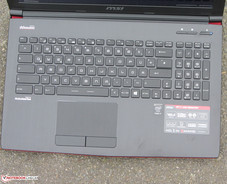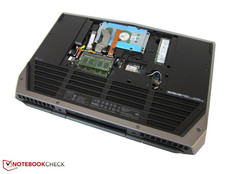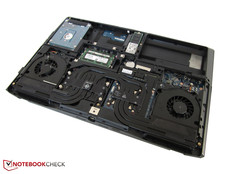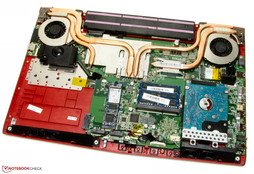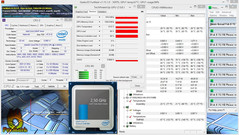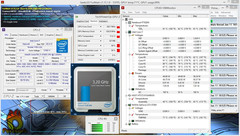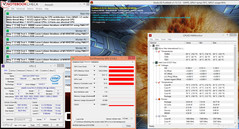Face Off: Dell Alienware 15 vs. Clevo P751ZM vs. MSI GE62

Hulking gaming systems like the 10-pound MSI GT80 sound jaw-dropping to own, but the more appropriate notebooks to have are the ones that best fit in the spaces available. A large gaming notebook may not be the ideal choice for a small apartment or tight dorm room where desk space can be a luxury.
15-inch gaming notebooks are popular for their portability and power. They may not be as mobile as 14-inch gaming models or as imposing as 17-inch ones, but this middle line is exactly what the majority of notebook gamers are looking for. For this Face Off, we'll be comparing and contrasting the well-known Alienware 15 to both the thinner MSI GE62 and the latest Clevo barebones.
We encourage users to check out our dedicated review pages below for more data and detailed analyses of each of the three models. This comparison is by no means a replacement, but a condensed aid for those on the fence.
Dell Alienware 15 (Radeon R9 M295X model)
Case
All three models in comparison have roughly the same length and width, yet they use different materials for their respective chassis. Dell utilizes carbon-fiber and rubber-coated surfaces throughout the Alienware 15 for both a high quality look and feel. The aluminum-like outer finish adds another dimension to the otherwise black and dark gray color scheme. Case quality is one of the best in its size category and is similar to that of the Alienware 17. The lid could have been stiffer, but is still more rigid than on other notebooks.
Meanwhile, Clevo continues to rely on heavy-duty ABS plastic for its barebone shells. The lid and palm rests have rubberized surfaces and the base itself is just as tough as the Alienware. Unfortunately, its lid is weaker and can creak as is the case with our review model from Schenker. The Clevo is also much heavier due to its larger cooling system by necessity.
The GE62 is notably thinner by as much as 9 mm when compared to the Clevo. Its brushed metal finish contrasts the duller matte looks of both other notebooks as well. Like the Clevo, the base itself is strong with no major points of criticism aside from the slightly weaker spot immediately above the optical drive. The lid is again much weaker and can be easily twisted enough to have an effect on image quality and color.
Alienware comes out on top by not just having a rigid base, but also a stronger lid than both the GE62 and Clevo P751ZM. Users may not like that the Alienware 15 is thicker than the GE62, but at least that extra girth here means better overall build quality.
Winner: Dell Alienware 15
Connectivity
Connectivity features include some notable differences between the Alienware, Clevo, and MSI. The major feature on the latest Alienware 15 is the proprietary Amplifier port for connecting an external desktop GPU. Very few gaming models have this option thus far and Alienware is one of the first to have it standard. The notebook's 3x storage bays should prove sufficient for most users, but hardcore gamers may be disappointed to find no official RAID support through the system BIOS.
The Clevo P751ZM includes more video-out ports (including two full-size DisplayPorts) and more audio options than both the Alienware and MSI. Users who have no interest in the Amplifier may like the extra connectivity and storage bays on the Clevo. The GE62 skips the bells and whistles on the Alienware and variety on the Clevo, but at least it carries native RAID support and an optical drive.
We'll give the very slight lead to Clevo since opting for the Alienware and its Amplifier will mean sacrificing audio options, RAID, and an extra storage bay. The desired features are largely down to user preferences.
Winner: Schenker Clevo P751ZM
| Dell Alienware 15 | Schenker Clevo P751ZM | MSI GE62 | |
USB |
4x USB 3.0 | 3x USB 3.0, 1x USB 3.0/eSATA combo | 3x USB 3.0, 1x USB 2.0 |
Video-out |
1x Mini-DisplayPort, 1x HDMI | 2x DisplayPort, 1x HDMI | 1x Mini-DisplayPort, 1x HDMI |
Other |
SD reader, Graphics Amplifier, 1x 3.5 mm mic, 1x 3.5 mm headphones, Gigabit LAN, Kensington Lock | SD reader, 4x 3.5 mm audio, Gigabit LAN, Kensington Lock | SD reader, 1x 3.5 mm mic, 1x 3.5 mm headphones, Optical drive, Gigabit LAN, Kensington Lock |
Storage Bays |
1x 2.5-inch SATA III, 2x M.2 | 2x 2.5-inch SATA III, 2x M.2 (2280) | 1x 2.5-inch SATA III, 3x M.2 |
RAID compatible |
No | Yes | Yes |
Display
All three notebooks sport high quality IPS panels from either Samsung or AU Optronics with generally accurate colors across all tested saturation levels. The panel on our Alienware 15 in particular is the exact same one as found on the Latitude E5550.
Once we look a little deeper, however, we can see that Alienware is the winner in this category for its brighter display and high contrast. It may have slightly worse colors out-of-the-box compared to the Clevo and MSI, but this has little significance for a gaming machine. However, we did notice a bit of edge bleeding on our model when displaying dark backgrounds.
The GE62 and its 4K panel will clearly have the crispest image and it is indeed one of the sharpest panels available on a 15.6-inch notebook. Unfortunately, users must sacrifice contrast, color space, and brightness in the name of extra pixels. Its glossy cover only exacerbates the lower brightness with distracting glare.
Especially since 2K or 3K gaming is just barely playable on notebook graphics, we still prefer native 1080p panels at least for this current GeForce generation.
Winner: Dell Alienware 15
| Dell Alienware 15 | Schenker Clevo P751ZM | MSI GE62 | |
| Size | 15.6-inch IPS 16:9 | 15.6-inch IPS 16:9 | 15.6-inch IPS 16:9 |
| Native Resolution | 1920 x 1080 | 1920 x 1080 | 3840x2160 |
| Pixel Density | 141 PPI | 141 PPI | 282 PPI |
| Panel ID | Samsung SDC4C48 | AU Optronics B156HAN01.2 | Samsung SDC4852 |
| Panel | Matte | Matte | Glossy |
| Alienware 15 | SCHENKER XMG U505 | MSI GE62-2QFUi716H11 | |
|---|---|---|---|
| Display | |||
| Display P3 Coverage | 65.1 | 66 | 52.2 |
| sRGB Coverage | 93.3 | 90.7 | 78.7 |
| AdobeRGB 1998 Coverage | 66.2 | 66.3 | 54 |
| Screen | |||
| Brightness middle | 308 | 250 | 268 |
| Brightness | 292 | 245 | 227 |
| Brightness Distribution | 83 | 78 | 74 |
| Black Level * | 0.28 | 0.23 | 0.39 |
| Contrast | 1100 | 1087 | 687 |
| Colorchecker dE 2000 * | 4.28 | 3.41 | 4.12 |
| Greyscale dE 2000 * | 4.54 | 2.88 | 3.65 |
| Gamma | 2.81 78% | 2.18 101% | 2.5 88% |
| CCT | 7497 87% | 6445 101% | 6423 101% |
| Color Space (Percent of AdobeRGB 1998) | 60 | 59 | 49 |
| Color Space (Percent of sRGB) | 92.9 | 90.3 | |
| Total Average (Program / Settings) |
* ... smaller is better
Input Devices
The keyboards on the Alienware 15 and Clevo P751ZM are visually similar down to their beveled layout and even solid feedback when pressed. Both offer shallow travel, but they are quiet nonetheless and are definitely not as soft as the keyboards on most Ultrabooks. The biggest differences here between the Alienware and Clevo is the NumPad on the latter notebook and the column of Macro keys on the former. As a result, the keys are a tad smaller and can feel more cramped on the Clevo. Since the keyboards are about the same otherwise, it's again down to user preferences if the integrated NumPad or dedicated Macro keys are more desirable.
Meanwhile, the SteelSeries Chiclet keyboard on the GE62 is a common find on most MSI notebooks. The keys here are louder with more clatter than the Alienware and Clevo and this gives off a cheaper plastic impression as well. Nonetheless, feedback is comfortable with a moderate stroke.
For the touchpads, the sizes on the Alienware, Clevo, and MSI are 10.0 x 5.5 cm, 10.7 x 6.2 cm, and 10.9 x 6.1 cm, respectively. MSI has the slightly larger touchpad for easier multi-touch gestures. The smooth matte finish on the Alienware and Clevo contrasts the brushed metal surface of the touchpad on the GE62. All models provide good gliding characteristics and the dedicated mouse buttons have solid feedback with no major concerns. For what it's worth, we did experience some minor scrolling issues on the Clevo P751ZM.
Winner: Keyboard -- Dell Alienware 15 and Schenker Clevo P751ZM
Touchpad -- MSI GE62
Performance
CPU Performance
There are plenty of CPU, GPU, and RAM options between these three models, but we will be comparing our specific configurations that were sent to us from the manufacturers. Raw CPU performance is essentially identical between the i7-4710HQ and i7-4720HQ in the Alienware and MSI, respectively. Users can save a bit of cash by opting for the more inexpensive i7-4710HQ without sacrificing significant performance.
Clevo only recently started adding desktop Intel CPUs to its notebook lineup. Thus, the i7-4790S has the advantage of faster clock rates at the cost of higher heat output and power demand. Multi-core and single-core performances according to CineBench are roughly 5 to 10 percent above the i7-4710HQ in the Alienware. It's not that great of a performance benefit considering that its TDP is roughly 40 percent higher than the i7-4710HQ or i7-4720HQ.
More comparisons and technical information on the Core i7-4710HQ and i7-4720HQ can be found on our dedicated CPU pages.
| Dell Alienware 15 | Schenker Clevo P751ZM | MSI GE62 | |
| CPU | 2.5 GHz Core i7-4710HQ | 3.2 GHz Core i7-4790S | 2.6 GHz Core i7-4720HQ |
| TDP | 47 W | 65 W | 47 W |
| RAM | 8 GB DDR3 1600 MHz, 2x SODIMM | 16 GB DDR3 1600 MHz, 4x SODIMM | 16 GB DDR3 1600 MHz, 2x SODIMM |
| GPU | Nvidia GTX 970M 3 GB GDDR5 | Nvidia GTX 970M 6 GB GDDR5, MXM 3.0b | Nvidia GTX 970M 3 GB GDDR5 |
| Optimus Support | Yes | No | Yes |
| Cinebench R15 | |
| CPU Single 64Bit (sort by value) | |
| Alienware 15 | |
| SCHENKER XMG U505 | |
| MSI GE62-2QFUi716H11 | |
| CPU Multi 64Bit (sort by value) | |
| Alienware 15 | |
| SCHENKER XMG U505 | |
| MSI GE62-2QFUi716H11 | |
| Cinebench R11.5 | |
| CPU Single 64Bit (sort by value) | |
| Alienware 15 | |
| SCHENKER XMG U505 | |
| MSI GE62-2QFUi716H11 | |
| CPU Multi 64Bit (sort by value) | |
| Alienware 15 | |
| SCHENKER XMG U505 | |
| MSI GE62-2QFUi716H11 | |
| 3DMark | |
| 1280x720 Cloud Gate Standard Physics (sort by value) | |
| Alienware 15 | |
| SCHENKER XMG U505 | |
| MSI GE62-2QFUi716H11 | |
| 1920x1080 Fire Strike Physics (sort by value) | |
| Alienware 15 | |
| SCHENKER XMG U505 | |
| MSI GE62-2QFUi716H11 | |
| PCMark 8 | |
| Work Score Accelerated v2 (sort by value) | |
| Alienware 15 | |
| SCHENKER XMG U505 | |
| MSI GE62-2QFUi716H11 | |
| Creative Score Accelerated v2 (sort by value) | |
| Alienware 15 | |
| SCHENKER XMG U505 | |
| MSI GE62-2QFUi716H11 | |
| Home Score Accelerated v2 (sort by value) | |
| Alienware 15 | |
| SCHENKER XMG U505 | |
| MSI GE62-2QFUi716H11 | |
| X264 HD Benchmark 4.0 | |
| Pass 1 (sort by value) | |
| Alienware 15 | |
| Pass 2 (sort by value) | |
| Alienware 15 | |
GPU Performance
All models sport the powerful GTX 970M Nvidia GPU. Our configured Clevo P751ZM, however, utilizes the 6 GB GDDR5 model for twice the RAM. Performance gains from the additional RAM overhead is very limited on 1080p settings, so users will likely not see any tangible benefits on the Clevo unless if they are gaming on an external 3K or 4K monitor. This is a similar situation to what we discovered on our previous Face Off between 17.3-inch gaming notebooks with GTX 980M GPUs. For example, our 6 GB GTX 970M in our Aorus X3 Plus shows slight performance gains over the 3 GB GTX 970M in our Razer Blade 14 when gaming on a native 3200 x 1800 display resolution.
3DMark benchmarks put our Clevo consistently ahead of the Alienware and MSI by just a few percentage points at most.
| 3DMark 11 - 1280x720 Performance GPU (sort by value) | |
| Alienware 15 | |
| SCHENKER XMG U505 | |
| MSI GE62-2QFUi716H11 | |
| 3DMark | |
| 1280x720 Cloud Gate Standard Graphics (sort by value) | |
| Alienware 15 | |
| SCHENKER XMG U505 | |
| MSI GE62-2QFUi716H11 | |
| 1920x1080 Fire Strike Graphics (sort by value) | |
| Alienware 15 | |
| SCHENKER XMG U505 | |
| MSI GE62-2QFUi716H11 | |
| Cinebench R11.5 - OpenGL 64Bit (sort by value) | |
| Alienware 15 | |
| SCHENKER XMG U505 | |
| MSI GE62-2QFUi716H11 | |
| Cinebench R15 - OpenGL 64Bit (sort by value) | |
| Alienware 15 | |
| SCHENKER XMG U505 | |
| MSI GE62-2QFUi716H11 | |
Gaming Performance
Does the extra VRAM in the Clevo give it the edge in games performance? Any advantages are again small when playing on 1080p. Our Clevo shows higher FPS for The Evil Within and Call of Duty: Advanced Warfare, while gains are essentially non-existent on the generally buggy Assassin's Creed Unity. Meanwhile, the additional system RAM on the MSI compared to the Alienware (16 GB vs. 8 GB) may be responsible for some of the performance differences.
More benchmarks and comparisons on the GTX 970M can be found on our dedicated GPU page here.
| GRID: Autosport | |
| 1920x1080 High Preset (sort by value) | |
| Alienware 15 | |
| MSI GE62-2QFUi716H11 | |
| 1920x1080 Ultra Preset AA:4x MS (sort by value) | |
| Alienware 15 | |
| MSI GE62-2QFUi716H11 | |
| Far Cry 4 | |
| 1920x1080 High Graphics Quality AA:SM (sort by value) | |
| Alienware 15 | |
| MSI GE62-2QFUi716H11 | |
| 1920x1080 Ultra Graphics Quality AA:SM (sort by value) | |
| Alienware 15 | |
| MSI GE62-2QFUi716H11 | |
| Dragon Age: Inquisition | |
| 1920x1080 High Graphics Quality (sort by value) | |
| Alienware 15 | |
| MSI GE62-2QFUi716H11 | |
| 1920x1080 Ultra Graphics Quality AA:2x MS (sort by value) | |
| Alienware 15 | |
| MSI GE62-2QFUi716H11 | |
| Assassin's Creed Unity | |
| 1920x1080 High Graphics Quality AA:2x MS (sort by value) | |
| Alienware 15 | |
| SCHENKER XMG U505 | |
| 1920x1080 Ultra High Graphics Quality AA:4x MS (sort by value) | |
| Alienware 15 | |
| SCHENKER XMG U505 | |
| Call of Duty: Advanced Warfare | |
| 1920x1080 High / On (Cache Shadow Maps Off) AA:FX (sort by value) | |
| Alienware 15 | |
| SCHENKER XMG U505 | |
| 1920x1080 Extra / On (Cache Shadow Maps Off), 2x Supersampling AA:2x SM (sort by value) | |
| Alienware 15 | |
| SCHENKER XMG U505 | |
| The Evil Within | |
| 1366x768 Medium / Enabled AA:FX (sort by value) | |
| SCHENKER XMG U505 | |
| MSI GE62-2QFUi716H11 | |
| 1920x1080 High / Enabled AA:SM (sort by value) | |
| SCHENKER XMG U505 | |
| MSI GE62-2QFUi716H11 | |
Stress Test
To test system stability, we run both Prime95 and FurMark to simulate maximum stress. These unrealistic conditions do not represent daily workloads, but are instead meant to put both the CPU and GPU at 100 percent capacity. If the notebook remains stable, then you can be sure it can handle any other tasks without major hardware failures.
The Alienware 15 performs very well under maximum synthetic stress. Its CPU never drops below its base speed and the GPU even retains some of its Boost potential. This is compared to the Clevo and MSI, both of which experience at least some slight throttling when running both Prime95 and FurMark. The CPU in the Clevo remains at its base 3.2 GHz clock, but GPU clock drops to the 800 MHz range. However, the Clevo shouldn't be discredited as it's already impressive that the desktop CPU can run without throttling on a notebook chassis.
The MSI GE62 comes out last as both the CPU and GPU run below their respective base clock rates.
Core temperatures are very high for all models. In particular, the GPU in the thinner MSI becomes much warmer compared to the GPUs in the Alienware and Clevo.
Winner: Dell Alienware 15 & Schenker P751ZM
| Dell Alienware 15 | Schenker Clevo P751ZM | MSI GE62 | |
| Rated GPU Core Clock (MHz) | 924 | 924 | 924 |
| Stable GPU Core Clock on FurMark (MHz) | ~974.5 | ~822.7 | ~680 - 700 |
| Rated CPU Core Clock (GHz) | 2.5 | 3.2 | 2.6 |
| Stable CPU Core Clock on Prime95 (GHz) | 2.5 | 3.2 | 2.0 - 2.3 |
| Maximum CPU temperature | 90 C | 92 C | 84 C |
| Maximum GPU temperature | 67 C | 71 C | 78 C |
Emissions
System Noise & Temperature
All three systems tend to have pulsating fans or HDDs even during low processing loads. The notebooks may be silent one minute at ~30 dB(A) and then rise to ~35 dB(A) the next. Part of the issue can be negated by simply installing SSDs only, but this is an expensive investment when most PC games can be dozens of GBs.
Fan noise when gaming can reach over 50 dB(A) on the Alienware 15 and MSI GE62. The Clevo is a bit quieter in this regard by remaining in the low to mid 40s, though still noisy nonetheless.
Surface temperatures on the Clevo are both highest and lowest when idling and on high loads, respectively. It's an odd result, but it makes sense considering that its desktop CPU is already running at very high clock rates even when idling. On the other hand, the Dell is able to remain very cool under low loads and will only become very warm when the processing load demands it. The thinner case of the GE62 means higher surface temperatures than the Dell despite the similar CPU and GPU components.
A clear winner in this category is a a tough call between Dell and Clevo. The Alienware has low surface temperatures and higher fan noise, while the Clevo has lower fan noise and higher surface temperatures. We personally prefer lower fan noise, but this will be down to user preference.
Winner: Schenker Clevo P751ZM
| Dell Alienware 15 | Schenker Clevo P751ZM | MSI GE62 | |
| Fan Noise when idling | 29 - 34 dB(A) | 32 - 35 dB(A) | 29 - 36 dB(A) |
| Fan Noise under high loads | 46 - 53 dB(A) | 42 - 45 dB(A) | 46 - 52 dB(A) |
| Average surface temperature when idling | 25.3 C | 35.8 C | 32.1 C |
| Average surface temperature under high loads | 42.5 C | 40.9 C | 43.3 C |
Battery Life
The Clevo loses this round before it even begins. Its more demanding desktop CPU and lack of Optimus both contribute to very poor runtimes at just 150 minutes under even the best of conditions. In comparison, the Alienware 15 can last for as long as 700 minutes under similar idling conditions. Results from the MSI are shorter than expected and may be attributed to the system's more power-hungry display and poorer power management.
Our Clevo has the advantage of a removable battery module that can be quickly swapped as needed compared to the integrated solutions on both the Dell and MSI. If based on pure runtimes, however, the Alienware 15 laps the competition.
Winner: Dell Alienware 15
| Alienware 15 88 Wh | SCHENKER XMG U505 96 Wh | MSI GE62-2QFUi716H11 87 Wh | |
|---|---|---|---|
| Battery Runtime | |||
| Reader / Idle | 696 | 150 | 234 |
| WiFi | 266 | ||
| Load | 91 | 89 | 63 |
| WiFi v1.3 | 162 |
Verdict
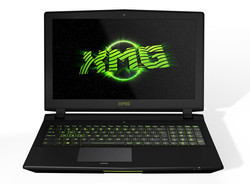
Normally for these Face Off rounds, we can quickly eliminate one of the three while the remaining two can be down to user preferences. The results are a bit more mixed this time between the Alienware 15, Clevo P751ZM, and MSI GE62.
In terms of performance and expandability, the Clevo indubitably comes out ahead. This alone may be be enough to persuade gamers who are just looking for the fastest and most complete package out of these three choices with end-user upgradeability. The main drawbacks are its heavy weight and shorter battery life, which gamers are more likely to shrug off in this case.
Next is the GE62, which is lighter and thinner with 4K display options. Such high resolutions are still not worth it in our opinion, especially since users must sacrifice backlight brightness and contrast. The Clevo and Alienware both have a leg up against the MSI in most other categories, so users who opt for the GE62 should be most drawn to its smaller size.
Lastly, the main attractions of the Alienware 15 are in its strong chassis and solid system performance under stress. It's an all-around great performer that unfortunately lacks some common gaming features like RAID or easily accessible core components. Its Amplifier port does give the notebook tremendous longevity should users take advantage of it.
See more quick comparisons in our Face Off series:
- Dell XPS 15 vs. Apple MacBook Pro 15 vs. Asus ZenBook Pro UX501
- Aorus X3 Plus vs. Gigabyte P34W vs. Razer Blade 14
- Dell XPS 13 vs. Apple MacBook Pro 13 vs. Asus ZenBook UX305
- HP EliteBook 820 G2 vs. Lenovo ThinkPad X250 vs. Dell Latitude 12 E7250
- Lenovo ThinkPad T450 vs. Acer TravelMate P645 vs. Dell Latitude 14 E5450
| Dell Alienware 15 | Schenker Clevo P751ZM | MSI GE62 |
|---|---|---|
+ Graphics Amplifier port + Higher display brightness + Dedicated Macro keys + Strong construction + Minimal to no throttling under extreme stress + Low surface temperatures when idling + Longer battery life + Larger touchpad | + GTX 970M with 6 GB GDDR5 VRAM + Desktop Intel CPU + MXM 3.0b and LGA1150 sockets + Lower maximum fan noise + Easy accessibility, 4x SODIMM slots + NumPad and Fingerprint reader + Robust cooling system + 4x storage bays and RAID support + Removable battery | + 4K resolution display + Thinner chassis and profile + 4x storage bays and RAID support + Easy maintenance + NumPad + Optical drive + Lightweight |
- Less accurate display colors - Slight backlight bleeding - No official RAID support - No NumPad - "Only" 3x storage bays - More difficult end-user maintenance | - High surface temperatures when idling - Dimmer display - No dedicated Macro keys - GPU throttling under extreme stress - Shorter battery life - Much heavier than the Alienware 15 and GE62 | - Dimmer display - No dedicated Macro keys - CPU and GPU throttling under extreme stress - Shorter battery life - Weaker lid rigidity |




